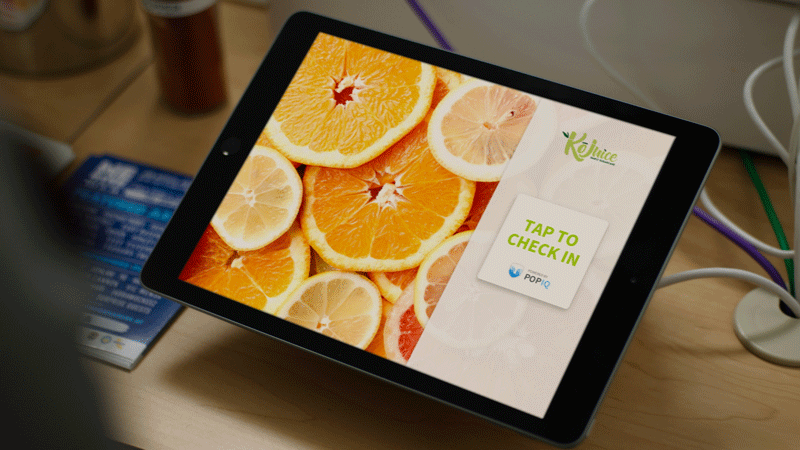A facial recognition company is starting with the restaurant industry in its quest to break consumers free of the tyranny of pulling out purses, wallets or phones to pay for things. For hungry consumers, the claimed benefits are speedier transactions and instant access to loyalty accounts, while restaurants and retailers are being sold on faster kiosk throughput and lower credit card processing fees.
A subsidiary of tech-focused restaurant brand Cali Group, which is also an investor in Kitchen United, PopID is looking to replicate what’s happened with the fast adoption of facial recognition technology in Asia, where nearly a billion Chinese consumers are using their faces as their identification to access office buildings, pay for meals and buy retail goods.
As kiosks become a more significant part of the restaurant-to-consumer relationship, PopID is hoping that lightning-quick connections to loyalty accounts and the ability for restaurants to encourage bulk loading of funds into a digital wallet will be enough to roll this technology out across the United States—with the prospect of countless additional uses outside of restaurants in the near future.
This alignment of the stars—convenience, speed, cool factor and lower fees—means kiosks and payment terminals from coast to coast will soon be taking your selfie should you opt in. If so, facial recognition will instantly identify customers and give them a connection to their bank accounts with no plastic or leather pouches as part of the process.
Cali Group Chairman and CEO John Miller said the idea for this new technology began four years ago when the company began installing kiosks in its CaliBurger restaurants to free up labor and increase average ticket sizes. Speaking on initial tests that solely connected consumers to loyalty accounts, Miller said speed of ordering improved significantly, with consumers generally reacting positively to the new high-tech option. In addition, Miller said the technology is “99.9 percent accurate” at recognizing individuals, outside of thorny challenges like bad lighting or identical twins.
“We have collected all of this data in the CaliBurger restaurants and [then] started selling the whole solution to other people in the industry that are looking to increase throughput on their kiosks,” he said. “Where we’re really going with this is using face payment to reduce credit card processing fees. I think that’s probably the most important result.”
Going under the digital skin, as it were, Miller said lowering restaurant transaction fees comes from allowing customers to load funds into a “face wallet” in one shot, compared with several, smaller transactions that all incur individual fees for retailers.
Miller said restaurants are often paying 4 to 5 percent of each transaction for credit card processing, which has a significant impact on a restaurant’s bottom line, especially those with multiple locations.
The advent of customer loyalty accounts in restaurants often gives customers the ability to quickly reorder recent or favorite items, which PopID believes is dissolving mental barriers customers may have about sharing personal information with retailers.
Outside of CaliBurger, Dairi-O, Deli Time, Rounds Bakery and a handful of other restaurants are rolling out PopID throughout the country this year. Miller said these tests showed that approximately 80 percent of customers choose to use the technology for logging in and payment, “so there’s a high level of trust out there.”
Miller added that existing kiosks can be upgraded to integrate PopID. Looking beyond restaurants, he said that everything from automobile access to entering apartments and office buildings.
“People are inherently lazy and convenience is paramount,” Miller said about the three primary options of paying with a phone, pulling out a wallet or using facial payment. “When they’re given those three choices, they prefer face.”
Of course, recent privacy concerns about mega-tech companies and initial backlash over Facebook’s Libra digital currency has shown there are limits to consumer adoption that’s tied to giving away any personal information or biological info.
It will be interesting to see if consumers react by loading currency into their accounts, and then continue to do so when the novelty has worn off. Who knows, by then wallets could officially be retired to the dustbins of history—or become the next vinyl and live on for generations to come.
Digital Transactions reported in early 2019 that an estimated 43 percent of iPhone users across the globe have enabled Apple Pay, one of the largest alternative payment offerings. Miller said it’s likely that other facial recognition services will be entering the U.S. market soon, but said Cali Group’s inherent ties to the merchant world, as well as the massive size of the country’s restaurant industry, suggest that American consumers will act like their Pacific counterparts.
“I think there’s a window right now,” he said of other facial payment players entering the space. “There will certainly be other venture-backed startups that come into the space, so we need to raise a lot of money and go fast.”


